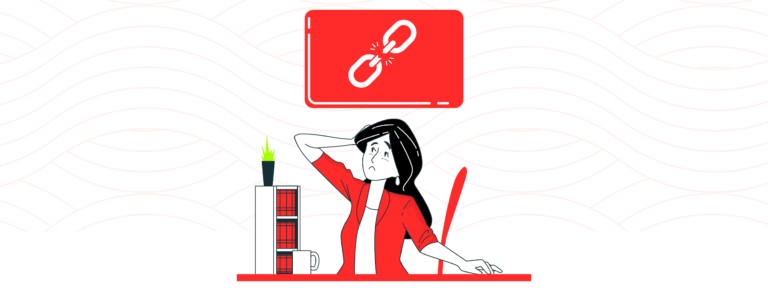12 PR Link Building Tactics To Earn Backlinks And Boost Business
You know the basics; now let’s dial it up. Achieving PR backlinks from high-domain authority sources is regarded as the holy grail in link building. 67.3% of marketers use PR link-building strategies to garner backlinks.
This blog will break down some tips for you on how to change your PR Link Building tactics so that you not only participate in the link-building game but also dominate it. Grasp some pros and cons and utilize CSR to understand the post-pandemic digital landscape.
Create Competitive PR Link Building Strategies
1. Think Outside the Traditional Media Box
Traditional media proposals fall short. In competitive markets, you need compelling angles that pop to draw in journalists. Discuss coordinating your company’s news or product launches with unusual or lesser-known holidays.
Why not tie a product launch with some ingenious math-related features? If you work in technology, for example, launch your product to celebrate Pi Day (March 14) It’s unique, entertaining, and unusual.
2. Get Interactive
Include Interactive material in your PR Link-building strategy that can be linked and shared along with being interesting. Set up a press release quiz on your website or develop an interactive press release.
For example, a fashion retailer could create a “Define Your Style” quiz and offer customized product recommendations based on the answers. This strategy is a magnet for backlinks as other sites link to your fun content.
3. Tap Into Niche Holidays
Have you heard of World Backup Day or International Coffee Day? These are ideal hooks for producing content with a topic that is geared up to be shared. Marketers earned 68% of backlinks by cracking content marketing.
If you own a chain of coffee shops, introducing a unique blend on International Coffee Day along with a press release can get coffee bloggers buzzing and encourage them to link to your website.
4. Craft eye-catching Campaigns and Earn Links
First of all: successful PR link-building campaigns are not about blasting your press release to anyone who’ll listen. They are concerned with conveying the appropriate message to the target audience at the right moment.
5. Strategic Distribution
Who benefits most from your story? Pinpoint the influencers and media sites in your niche who will most likely spread the word about your message.
Tailoring your distribution list this way not only increases the chances of your content being accessed but also boosts the relevance of the backlinks you gain, which is highly beneficial to your search engine optimization efforts.
Integrate CSR into Your Digital PR Link Building Strategy
Corporate Social Responsibility (CSR) includes a good business, especially when linked with digital PR. it can boost your brand reputation, build trust, and stand out your business in a competitive market.
How to Develop a CSR-Focused PR Campaign
Start by identifying what your brand stands for, beyond profits. What values drive your business? Once you’ve nailed down your CSR focus, craft story angles that emphasize these actions. For example, if your company has switched to fully renewable energy sources, announce it on Earth Day with eye-catching graphics and data on the impact of your switch.
Analyzing the Post-Pandemic PR Link-Building Industry
The way we consume media has been revamped. Here’s how you can take a turn for the better:
1. Adopt Digital-First Communications

Your digital footprint is more important than ever thanks to the rise in the consumption of online content. Focus on creating high-quality online content that can be easily shared and linked. This covers everything, from lengthy blogs, and guest posts to attention-grabbing social media snippets that entice readers to click. 38.9% of marketers earn backlinks from guest posts.
2. Virtual Events and Webinars

Physical events might have taken a backseat, but the virtual world is thriving. Hosting webinars or virtual roundtables on relevant topics for your industry can help you establish yourself as an authority and garner links from audiences, industry blogs, and potentially news sources.
3. Collaborate with influencers

Influencer collaborations have the power to catapult your brand into the spotlight or public eye. Select influencers who genuinely have an impact on their audience and who have the same values as your company. In addition to third-party media attention, a strategic relationship for a new product line or social cause can yield valuable backlinks from the influencer’s platform.
Legal and Ethical Considerations
Here’s the kicker: none of your efforts matter in PR link building if they don’t play by the rules. Here’s a quick legal and ethical rundown:
- Following guidelines is Non-Negotiable: Follow Google’s Webmaster Guidelines at all times. A penalty that plunges your website into the depths of search engine rankings is the last thing you want.
- Transparency Wins: Be honest about your link-building strategies at all times. Being truthful strengthens the integrity of your brand and fosters trust.
- Value Exchange is Key: When requesting links, be sure there is a mutual advantage. This is sharing content that benefits the audiences of both parties, rather than financial exchanges. At least 24.8% of SEO specialists perform link exchange.
- Avoid Using Black Hat Techniques: Purchasing links or taking part in link exchanges? An absolute no-no. These strategies have a swift payback and can harm both your brand and SEO.
Pros And Cons Of PR Link Building For Brands And Businesses
These 5 pros and cons will give you a glimpse into the industry and help you better understand how to incorporate strategies in PR link building:
| Pros | Cons |
| 1. Boosts Organic Search Rankings High-authority backlinks from reputable media outlets are a significant ranking factor in Google’s algorithm. | 1. High Costs and Limited ROI PR link building can be expensive, especially when working with renowned PR platforms or firms. |
| 2. Boosts Brand Visibility and Credibility Being recognized and featured in top-tier publications builds trust with customers and partners. Furthermore, positions your brand as a leader in your industry. | 2. Unpredictable Outcomes You have barely any control over how PR link development turns out. Even with well-crafted press releases or news stories, there is no guarantee that media outlets will pick up your content or link back to your website. |
| 3. Expands the Variety of Backlinks PR link building yields links from a range of reputable domains. This lessens the possibility of search engine penalties and tells Google that your brand is trustworthy and has a natural online presence. | 3. Low Relevance of Links Links obtained through PR campaigns may come from media sources that are not contextually relevant to your niche. PR-driven connections frequently lack this topical relevance, and search engines like Google favor backlinks from authoritative and relevant websites within your industry. |
| 4. Enhances Content Marketing Well-executed PR link-building enhances content marketing initiatives. It contributes to the content’s distribution over reliable platforms, expanding its effect and reach. | 4. Difficult to Track Success Tracking the direct impact of PR link-building activities on SEO and broader business goals is a notoriously difficult task. |
| 5. Improves Social Proof and Engagement Getting mentioned by media with a high authority offers social proof, confirming the company’s legitimacy in the eyes of clients and peers in the industry. | 5. Risk of Spam Some PR link-building techniques involve distributing press releases widely to numerous irrelevant or low-authority websites. Search engines may get suspicious and impose penalties for engaging in spamming behavior. |
Wrapping Up
As you engage in PR link building strategies, the ultimate objective is to create a brand that, by its authority, creativity, and integrity, naturally draws backlinks.
At OutreachMani, we’re determined to make these strategies work for your edge over the competition. So, if you’re looking to make some noise in your industry and snag those top-tier backlinks, you’re in the right place. Are you prepared to take your link-building to a whole new level? Let’s get building!
FAQ
In the domains of digital marketing, PR link building is a tactic that creates buzz about your company or certain products and garners backlinks from renowned websites, social media influencers and authoritative media sources.
Make compelling and relevant pitches that spike interest.
Produce outstanding content to earn credible backlinks and traffic with your content.
Actively reach out and make connections.
Create a strategy by which your PR efforts inevitably result in further link opportunities.
Participate in renowned and trustworthy websites that will increase traffic and credibility.
Any connection from the website of a media source is considered a PR link. They are a crucial aspect of digital PR links campaigns since they indicate search engines that the information that your company publishes online is trustworthy and originates from a credible source.






